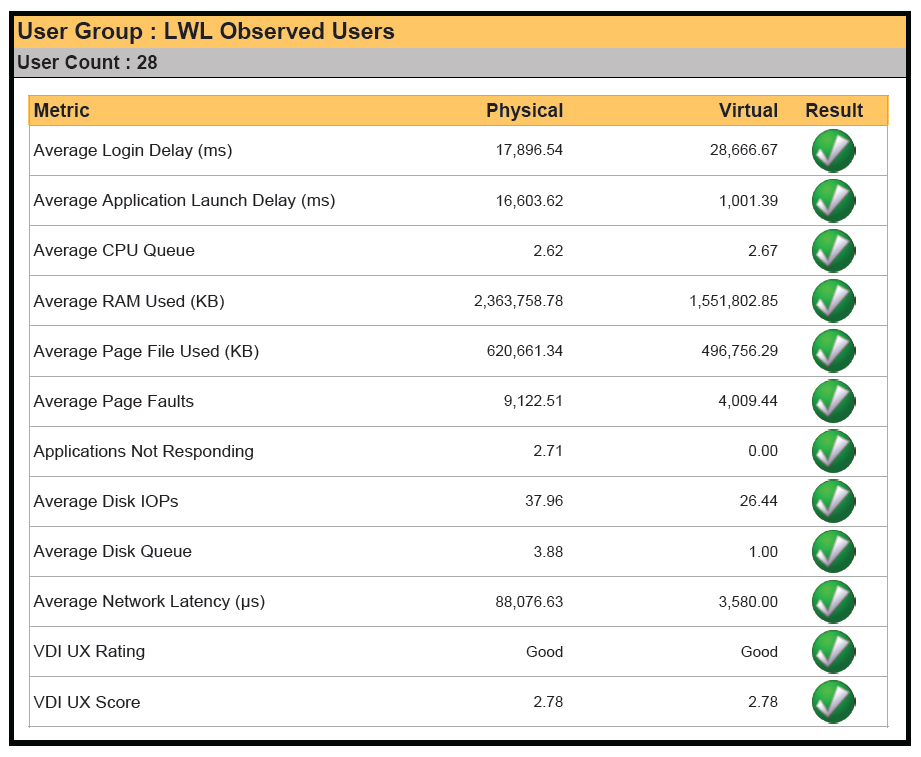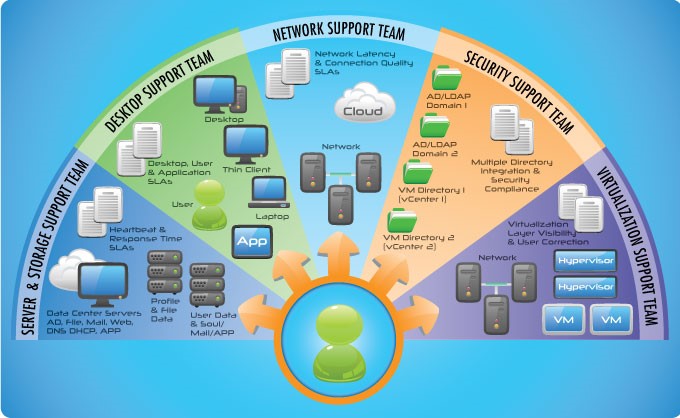For over 25 years we’ve seen innovation and change in many areas of information technologies. For example, the shift from monolithic mainframe to distributed microcomputer-based computing. Networking has been completely reborn and wireless technologies have enabled pervasive access for all. Telephony is no longer a dedicated infrastructure and voice is simply another data type. All of that aside, there is a core segment of IT that has yet to ‘fully’ shift and emerge in a new and meaningful way. This segment is the user workspace.
 Don’t get me wrong, the desktop systems we have today are substantial more powerful and feature-rich than those IBM Model M ‘click’ keyboards we sat behind in the late 80s and 90s. And we certainly have newer approaches to deliver, manage and operationalize those systems—whether that be VDI, or some other host- or cloud-based workspace delivery approach. But for the most part, we still rally around the machine itself; especially as it relates to the user experience.
Don’t get me wrong, the desktop systems we have today are substantial more powerful and feature-rich than those IBM Model M ‘click’ keyboards we sat behind in the late 80s and 90s. And we certainly have newer approaches to deliver, manage and operationalize those systems—whether that be VDI, or some other host- or cloud-based workspace delivery approach. But for the most part, we still rally around the machine itself; especially as it relates to the user experience.
It’s Not Really the Machine
At the end of the day, whether we are delivering physical desktops, server-based end-user workspaces, or Desktops as a Service (DaaS) from the cloud, the shift from a machine-centric approach to a user-centric approach has yet to occur. Of course we have gained considerable experience in alternative Windows-based workspace delivery approaches. No one would doubt that fact. But how many of you still define success based purely on machine key performance indicators. One of the core differentiators and approach taken by Liquidware Stratusphere UX is the ability to provide user-centric visibility.
Think about it… The rollout of a new application. The deployment of the latest version of Windows. The creation of a golden image tied to a corporate laptop standard. The platform or architectural update of your VDI solution. All of these are a means to an end. Right? The common thread through all of these examples is the user. From the users’ point of view, all of what we manage is merely a step along the path. Yet most of us define a measure of success based upon on these incremental steps.
Hardware Assessment vs User Baselining
The majority of IT professionals see the value in an assessment to understand sizing and design considerations for an infrastructure, including an examination of metrics such as aggregate totals for CPU, RAM and storage. Further, most see the value in the visibility into how users naturally group, such that a measure of user tiering and an application strategy could be determined. These are excellent steps in support of designing and building the infrastructure as well as helping to cast the correct image and application delivery strategy.
But what about the user and measurement of their relative performance over time, during a platform migration or as a means to validate a change in how Windows is delivered? One reason customers choose Stratusphere UX is to determine if their current workspace consumption is suited to being transitioned to a next generation (physical virtual, or cloud) workspace. User baselining and on-boarding answers those questions and sets the stage for successful workspace projects.
 Beyond the assessment—which is critical for platform, architectural and image (application) design—Stratusphere UX can also be employed to baseline the user experience as a means to on-board users. User experience is a tricky thing. It’s difficult to quantify and it can also be incredibly subjective; varying widely from user to user. As difficult as it can be to quantify, there are ways to measure it and Stratusphere UX provides everything you need to support the creation of user baselines.
Beyond the assessment—which is critical for platform, architectural and image (application) design—Stratusphere UX can also be employed to baseline the user experience as a means to on-board users. User experience is a tricky thing. It’s difficult to quantify and it can also be incredibly subjective; varying widely from user to user. As difficult as it can be to quantify, there are ways to measure it and Stratusphere UX provides everything you need to support the creation of user baselines.
Baselines are useable in a number of ways, but most importantly, they’re a real world benchmark you can use to validate that your transformation project is on target as it progresses from a proof of concept to a production environment and beyond. A key way that baselining is very useful, is in the establishment of ‘thresholds’ of normal or acceptable performance. Subsequently, if measurements of the new workspace fall outside of normal thresholds, it signals that issues may be developing—this is a cornerstone for user-centric monitoring and diagnostics.
Stratusphere UX and Your Next Workspace
Regardless of where you want to go, it is critical that you define some user-centric measure of success. How else would you know when you are done? How would you define a KPI or SLA to showcase completion of the project? Surely you don’t define success simply because the help desk phone isn’t ringing. A few months ago, I wrote about putting user experience at the center of the workspace—examining and trending performance and consumption metrics based on the user (versus infrastructure or APM-based trending that primarily focus on the hardware and platform).

User baselining is the enabler to support the shift that is occurring in the user workspace. In addition to a hardware assessment, capturing the baseline is critical to ensure you provide an equal-to-better user experience when making any changes to the user workspace—again, regardless of physical, virtual or cloud-delivered.
Liquidware Stratusphere UX provides the visibility necessary to baseline the user experience and define a measure of success for your organization. I’d love to hear how you leverage user-centric information and metrics to measure success in your workspace projects. Please share! And contact us to provide some details about your desktop virtualization project; we’d love to provide you with some free licenses to get you started on your own shift to leverage user experience baselining.








[…] Read the entire article here, Baselining the User Experience and Defining a Measure of Success with Stratusphere UX | Liquidware B… […]
[…] be an almost impossible goal without the right visibility detail. About a year ago I wrote about Baselining the User Experience and Defining a Measure of Success with Stratusphere UX. I wrote about the shift towards using user experience as a definition of success and the […]
[…] Baselining the User Experience and Defining a Measure of Success with Stratusphere UX […]